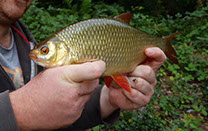
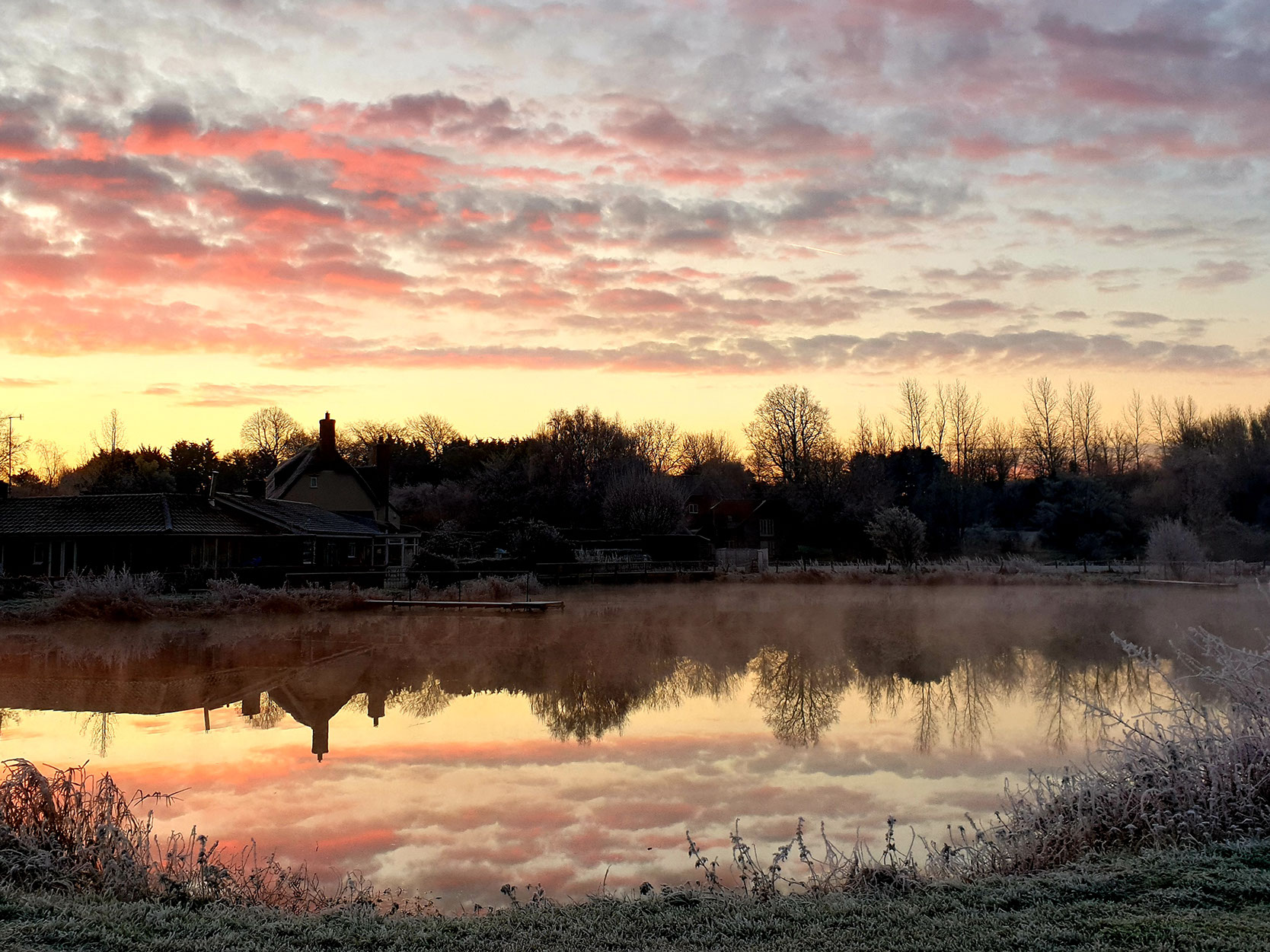
WDAC CURRENT NEWS AND INFO

Find out more
We're always updating our news feed to keep our membership up-to-date with Club news.
See this months news below as well as links to previous articles.

NEWS BY MONTH
SEPTEMBER 2019 NEWS
OCTOBER 2019 NEWS
DECEMBER 2019 NEWS
MARCH 2020 NEWS
JUNE 2020 NEWS
DECEMBER 2020 NEWS
JANUARY 2021 NEWS
FEBRUARY 2021 NEWS
APRIL 2021 NEWS
MAY 2021 NEWS
AUGUST 2021 NEWS
JANUARY 2022 NEWS
MARCH 2022 NEWS
APRIL 2022 NEWS
JULY 2022 NEWS
DECEMBER 2022 NEWS
FEBRUARY 2023 NEWS
MARCH 2023 NEWS AGM
MAY 2023 NEWS
DECEMBER 2023 NEWS
MARCH 2024 NEWS AGM
MEMBERSHIP
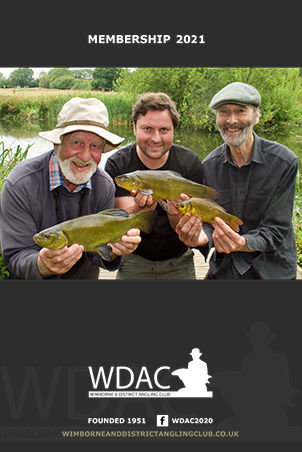
For full details on how to join and the rates for 2020/21
Membership details
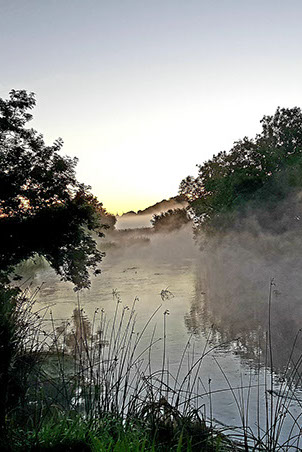
WDAC VENUES
Further details on all of our waters and concessions.
Venue information
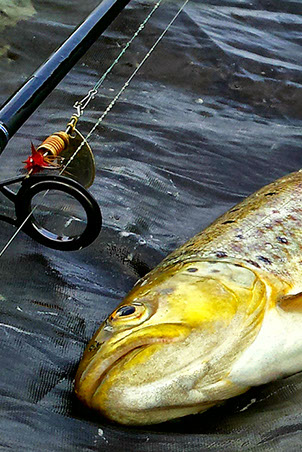
WDAC offers our membership the chance to fish two trout waters, Winterborne Zelston and Rawlsbury
GAME SECTION
Game section
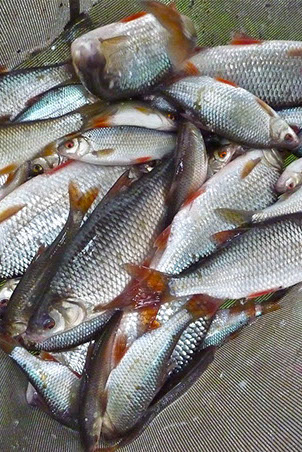
WDAC runs numerous matches across the calendar year, encompassing both stillwaters and the River Stour. Matches are also held on non-club waters.
MATCH SECTION
Match section
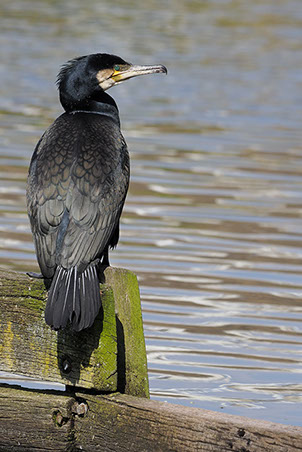
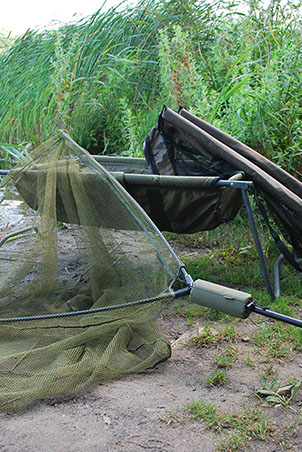
CORMORANT WATCH
YOUR club needs YOUR help to report sightings of cormorants
Report here
It's critically important that we look after the welfare of our fish, for today and for tomorrow.
FISH CARE
Read more here
MEMBERSHIP
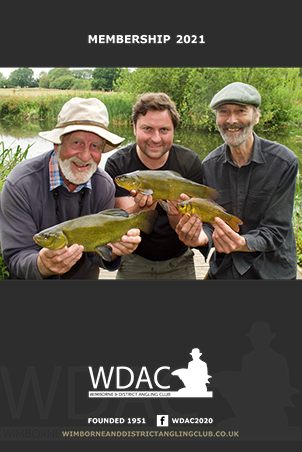
For full details on how to join and the rates for 2020/21
Membership details
MEMBERSHIP
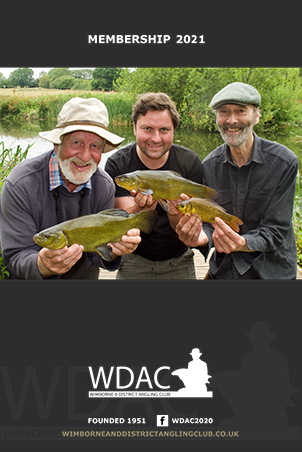
For full details on how to join and the rates for 2020/21
Membership details
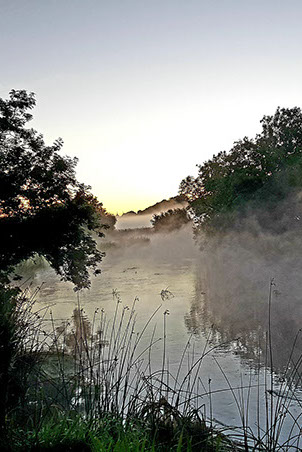
WDAC VENUES
Further details on all of our waters and concessions.
Venue information
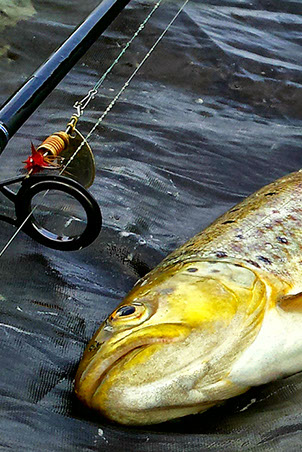
WDAC offers our membership the chance to fish two trout waters, Winterborne Zelston and Rawlsbury
GAME SECTION
Game section
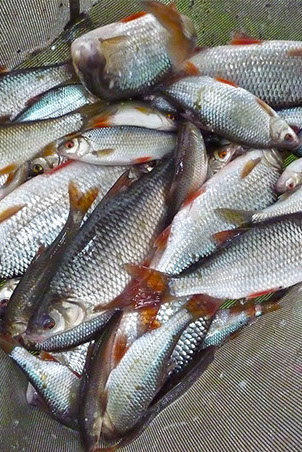
WDAC runs numerous matches across the calendar year, encompassing both stillwaters and the River Stour. Matches are also held on non-club waters.
MATCH SECTION
Match section
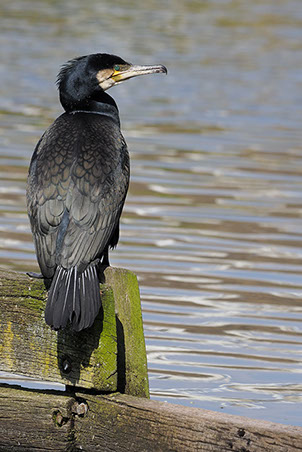
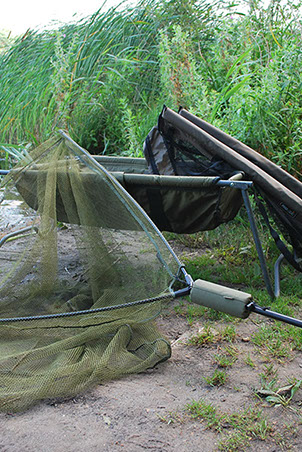
CORMORANT WATCH
YOUR club needs YOUR help to report sightings of cormorants
Report here
It's critically important that we look after the welfare of our fish, for today and for tomorrow.
FISH CARE
Read more here
MEMBERSHIP
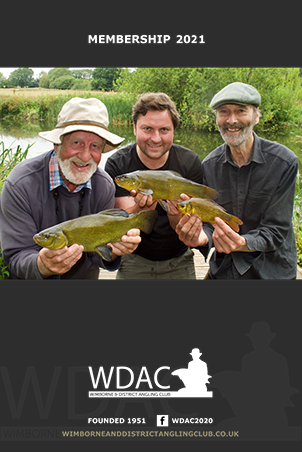
For full details on how to join and the rates for 2020/21
Membership details
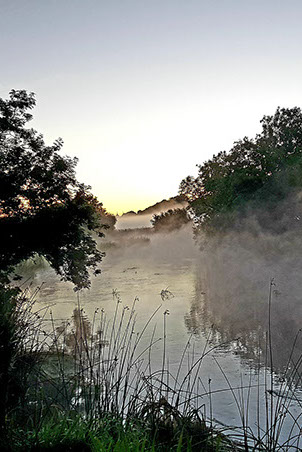
WDAC VENUES
Further details on all of our waters and concessions.
Venue information
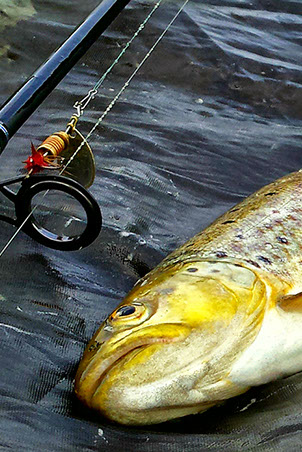
WDAC offers our membership the chance to fish two trout waters, Winterborne Zelston and Rawlsbury
GAME SECTION
Game section
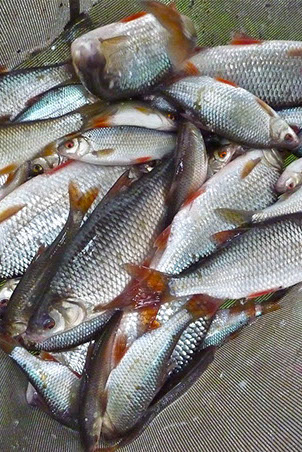
WDAC runs numerous matches across the calendar year, encompassing both stillwaters and the River Stour. Matches are also held on non-club waters.
MATCH SECTION
Match section
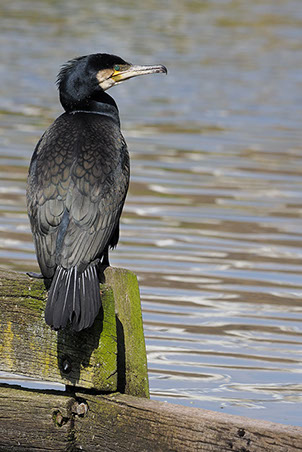
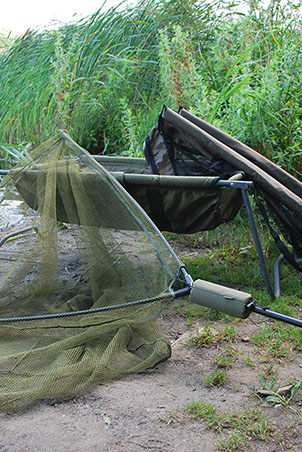
CORMORANT WATCH
YOUR club needs YOUR help to report sightings of cormorants
Report here
It's critically important that we look after the welfare of our fish, for today and for tomorrow.
FISH CARE
Read more here
MEMBERSHIP
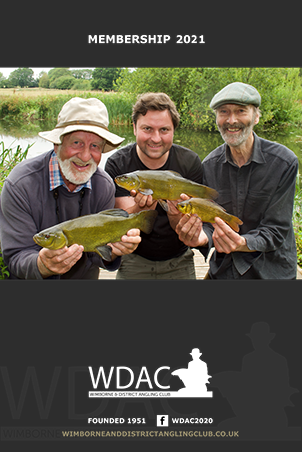
For full details on how to join and the rates for 2020/21
Membership details
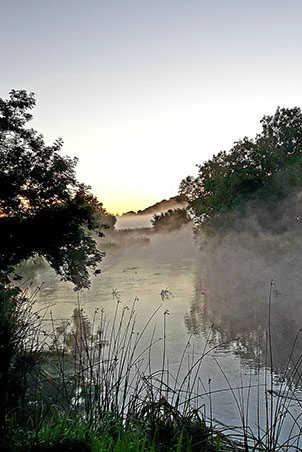
WDAC VENUES
Further details on all of our waters and concessions.
Venue information
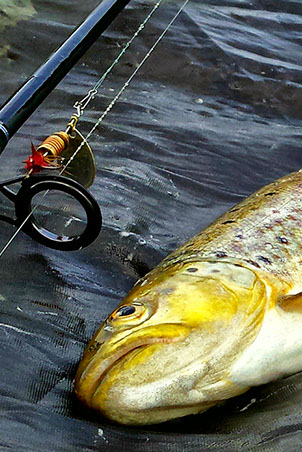
WDAC offers our membership the chance to fish two trout waters, Winterborne Zelston and Rawlsbury
GAME SECTION
Game section
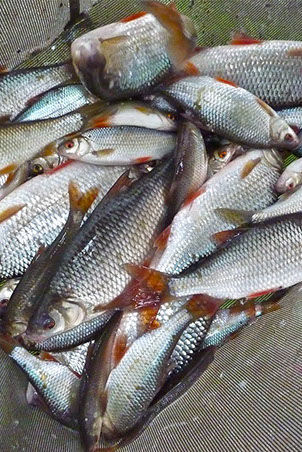
WDAC runs numerous matches across the calendar year, encompassing both stillwaters and the River Stour. Matches are also held on non-club waters.
MATCH SECTION
Match section
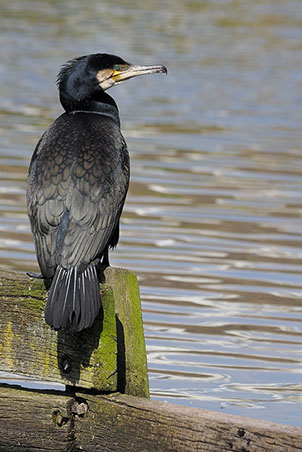
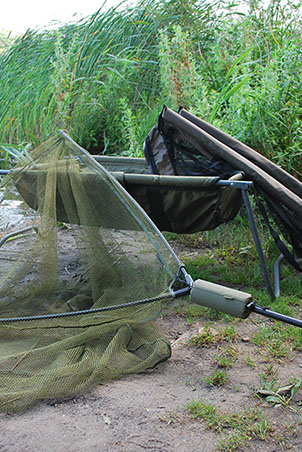
CORMORANT WATCH
YOUR club needs YOUR help to report sightings of cormorants
Report here
It's critically important that we look after the welfare of our fish, for today and for tomorrow.
FISH CARE
Read more here
MEMBERSHIP
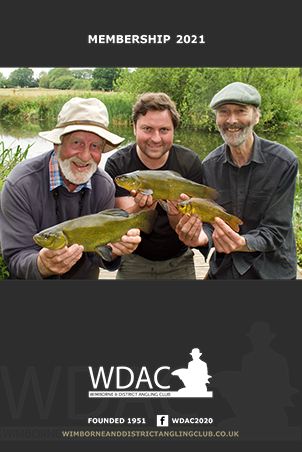
For full details on how to join and the rates for 2020/21
Membership details
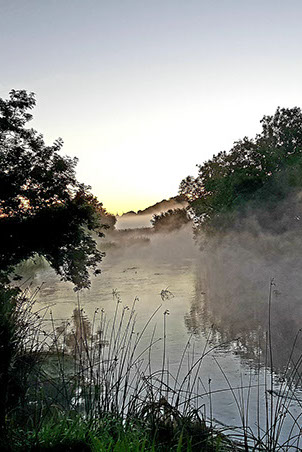
WDAC VENUES
Further details on all of our waters and concessions.
Venue information
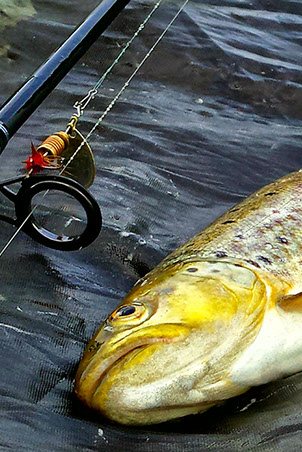
WDAC offers our membership the chance to fish two trout waters, Winterborne Zelston and Rawlsbury
GAME SECTION
Game section
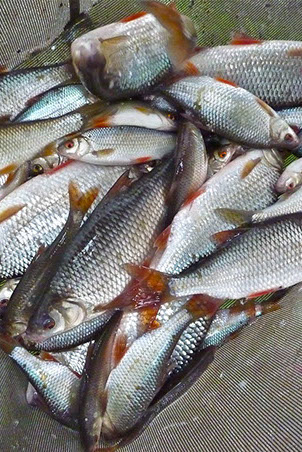
WDAC runs numerous matches across the calendar year, encompassing both stillwaters and the River Stour. Matches are also held on non-club waters.
MATCH SECTION
Match section
MAY 2021
In absence of the AGM – An introduction by the Club’s President
Under normal circumstances we hold an Annual General Meeting each year to deal with the official business of the Club and to provide you with lots of helpful information. The AGM is your chance to ask questions and to meet the members of the Committee. Unfortunately, yet again we were not able to meet in this way in March and deal with those matters that require a decision from you but through the series of reports that follow you can at least be updated as to what has happened and is happening in and around your Club.
Your Club is in good hands so on your behalf it is my pleasure to thank every member of the committee for giving their free time to make our Club such a success. We have almost 1000 members and this shows a tremendous recovery from the position we were in just five years ago when our membership was half that figure. I would also like to thank Club members young and old who have supported the Committee on major work projects, regular work parties or by working alone.
As we emerge from the long and challenging winter months, we can all look forward to those warm summer breezes and hopefully see the lifting of the final restrictions imposed under the Roadmap out of lockdown. Thinking back, it felt as if we were soon out fishing again provided, we complied with the guidelines so, many thanks to the Angling Trust for their efforts in making this happen.
Looking through the new membership book I am reminded we have such a broad spectrum of fisheries; some are quiet backwaters where we can spend time by the waterside away from the hustle and bustle of modern life. Others are situated in and around Nature Reserves or Parks these offering open space for everyone to enjoy being close to water. If we choose to fish in these open spaces, we should accept the emphasis is one of sharing the facility and observe the fact that no one category of user is more important than another. More housing will undoubtedly create more visitors, but these developments come with aims to regenerate the river, improve water quality and enhance biodiversity which, is great news for us fishers.
In the reports that follow, some of your committee officers will update you on the financial position of the Club, on works completed, on those still in progress and on those scheduled for the future. Meanwhile I look forward to meeting with you again soon but until then I wish you tight lines and a wonderful year.
Brian Heap
President
WDAC
Chairman’s Report – Review of 2020
The Coronavirus pandemic has made such an impact on all our lives. Once it arrived and we suffered that first lockdown in March 2020 it dominated many of the actions of the WDAC Committee through the year, and indeed it still does today.
In the January and February of 2020 fishing activity had been muted due to some awful weather. A plan was being refined by Club Secretary, Stu Hitchman, for remedial works at Kingsbridge because of the poor quality surfacing of the new car park and the state of the track between Packhorse and Tranquil, but the rain led to its postponement.
Applications for Membership were slightly down, reflecting the bad weather and in the January 2020 minutes of the Committee, there was a reference to surface water running off the fields and into the lake at Winterborne Zelston causing bank erosion. (Something that did not happen in the same way this last winter).
In February the Committee meeting took place, as normal. Kevin Parman, after long service on the Committee resigned due to work commitments and the Committee noted and thanked him for his help. Stu Hitchman and Sean Harris met Dean Asplin of the Angling Trust, which has become a regular annual meeting to talk over development matters. Whilst we have had good relations with the Angling Trust and knew that organisation’s value in assisting us on a number of matters, we had no idea how pivotal the work of the Angling Trust in lobbying Government was going to become for the sport as a whole.
The minutes for February set out a tentative programme for events, including the Club’s annual day with Children from Julia’s House, doing another event with Kids in Care from Poole (now BCP Council), working on a trout fishing novices day for those who wanted to learn fly fishing to be held at Winterborne Zelston and starting work with Dorset Council for a Family Fishing Day at Moors Valley Country Park for the first time. Of course, none of these events took place and the Club’s Welfare Officer, Sean Harris, is now working on some of these initiatives for later as the Country slowly unlocks.
On the 4th March 2020 the Committee met, as normal, at the British Legion. As it transpired we did not meet again at the British Legion until September and have not been able to meet again face to face as a Committee since. As the Nation faced the pandemic and WDAC closed its waters, it was agreed, by email that the Committee would meet ‘on line’ in April. Interestingly, the Constitution is silent on how the Committee should meet, only that it should do so once a month, so it was concluded that under the circumstances a face to face meeting was not a pre-requisite.
At that April meeting the Committee ensured that the Treasurer had sufficient funds to pay foreseeable expenditure for the remainder of the year, that we would negotiate with landlords to seek a reduction in rents and also the Committee would facilitate an extension of current memberships to be broadly equivalent for the period of the lockdown, so Members would not lose out.
We recognised that ‘essential’ work for an Angling Club meant, if necessary feeding fish, checking water quality and electric fences and carrying out security checks. However, I took the precaution of phoning the Angling Trust to check. During the year I asked advice from the Angling Trust on a number of occasions and always found the advice helpful, even if sometimes there was uncertainty about the meaning of the Government’s advice. Letters of authority were written for Club members to use on ‘essential’ business in case they were challenged.
The Committee knew that fishing was likely to be a way of individuals getting outside and, as we are already aware how important fishing can be for mental well-being, it was accepted that the Committee focus was to ensure that, as soon as we were allowed to fish, the Club’s venues would be open.
On the first day back, in mid-May there was apprehension about how busy some of our waters might be. Fortunately, there was no over-crowding, although some venues were much busier as one would expect. From anglers I met last year on the banks of our waters, there was a genuine appreciation that it was just great to be out fishing and how lucky we were. In consequence there was smiling and politeness and it certainly gave myself and other Committee Members a real boost to find how much members were valuing their sport.
I have disliked the Government’s management of the pandemic, due to the frequency with which rules changed. I have spent hours re-writing Covid related Angling Club rules since I wrote the first ones ready for the reopening of the Club’s venues in mid-May and circulated them to the Committee for comment before publication. As you will be aware, there has been a change about once every couple of months and in turn this has meant new emails to all Members and work by James Nash, our Media Officer to get them out, update posts to Facebook and update the website. James has carried a large workload in the last year and managing our Facebook account has also caused him real difficulty at times which he has faced with equanimity. In July the Club exceeded a 1000 followers on Facebook for the first time.
Part of the problem the Committee faced was understanding what the Club ought to do to minimise risk. For example, I had conversations about the danger of opening gates, some Members were genuinely apprehensive about the danger of catching Coronavirus from the metal. It was agreed that individuals had to take responsibility for their own welfare as that was realistically the only way forward. The most problematic issue in some respects was our portable toilets; in the event we re-opened them in July with an enhanced cleaning service!
Below is a report from your Membership Secretary, so I will not dwell on Chris’s challenges except to say that he was another Club officer who worked exceptionally hard in the last year. The Club not only had an avalanche of applications once it was realised we could go fishing again, but many of those were from anglers new to the Club, or others who for one reason or another had been too busy in their lives to fish, but then found themselves furloughed. Applications also were submitted for ‘minors’ in heartening numbers. Angling nationally increased as an activity last year, as measured for example, by the increased number of rod licences purchased nationally and the Club has benefited from this increase in activity too.
One of the silver linings of the first lock down was the way in which nature re-asserted itself on our gated waters. It was helped by a warm dry Spring. When we got back, we found fish fresh green vegetation and birds nesting in larger numbers than usual. Our fish were well, aided in some instances by the feeding Committee Members had carried out, and had been rested so that at some of the busier venues, anglers had some great catches. However, the other side of nature claiming back the countryside has been the problems with some of our less welcome residents. Last December I met an otter on the River Stour and then shortly after one eating Club trout at Winterborne Zelston, the latter let me get to within a few metres and showed no fear. To those members who contacted the Club about otter sightings the response, inevitably, is that we really cannot do anything about removing otters. The otter at Winterborne Zelston moved on by itself assisted by the Game Section not re-stocking.
Notwithstanding the otter, trout anglers had a particularly good 2020 once the waters were open with more and bigger trout caught than ever. It had been agreed at the start of the year to increase the average stocking size of fish to 1.5kgs, which was also reflected in a ticket price increase, necessary due to the increase cost of stocking fish in any event. (One of the problems now facing the trout rearing industry is obtaining pellets, the bulk of which come from the EU). The Game Secretary at the time, Nigel Horsman had arranged a stocking at Winterborne Zelston in early march. Steve Neale, our Head Bailiff, fed these fish regularly through the lockdown and they all put on weight and were incredibly fit. Reports came in about extraordinary fights with fish that stripped fly line right down to the backing and I personally experienced the hardest fight from a trout in ages on the last day of May, which weighed just under six pounds. As the fishing got difficult at Winterborne Zelston due to the normal drop in water levels so Rawlsbury came into its own and the Club’s stockist continued to provide really excellent fish. At the end of the Rawlsbury season and using the experience learned from earlier in the year at Winterborne Zelston, it was decided to feed the trout at Viners, the catch and release lake, a job taken on by Paul Baker, who agreed to become the new Game Secretary, when Nigel left the post at the end of the year. Despite the strangest of years Nigel Horsman worked hard for the Game Section and has set the bar for Paul Baker to follow – thanks Nigel.
The works at Kingsbridge that had been deferred due to the poor weather, were then put on hold due to visitor numbers. The muddy ground had baked in the Spring sunshine so the car park was not causing a problem and it was recognised that three or four days were needed to carry out the major work, when there would be no or limited use of the car park. In the event, a contract was let for the major work at the turn of the year and have been a real benefit this spring. Further, and in addition works have carried on putting paths around the smaller lakes and renewing swims to expand the fishing capacity at the complex. The Club owes a special vote of thanks to Mervyn Griffiths for providing himself and his machine to carry out this latter work and indeed other work elsewhere. In this newsletter is a separate report by Stu Hitchman on these works, which is only inaccurate to the extent that it fails to mention Stu’s huge involvement at every level from planning them to working tirelessly with a shovel.
In the first National lockdown the work of the Angling Trust, lobbying government and providing a communication channel to local clubs was very important. The advice about the second lockdown and the way that was unwound also demonstrated to me the great importance of the work the Angling Trust does behind the scenes. I got real grief from friends who play golf, that their courses remained closed when anglers were allowed to fish. One of the most important lessons learned in 2020 is that Angling needs a strong single representative voice to deal with Government, so I urge you, if you are not already a member to all join the Angling Trust. Of course, there was a degree of serendipity involved in putting Jamie Cook, the Angling Trust’s Chief Executive, on the front cover of this year’s membership book along with Chris and Hugh at Edmondsham. However, every time you look at that cover it should now act as a reminder to join the AT, if you have not already done so!
We ended this very strange year with the Club in a sound position and with the Committee focused on providing initiatives to keep Members fishing. As you will know, a survey was circulated to gain Member input to some important issues and the responses to the survey are in a separate article below.
In case you are wondering my best fish of the year was not caught by me, but my granddaughter, eight year old Hetty – a wonderful perch of nearly three pounds caught at Kingsbridge on a whip with float and a single maggot right by the edge of some lilies. Its capture was spectacular in terms of the heady mix of surprise, chaos and wonder.
We will be holding an AGM as soon as it is practical to do so.
Mike Hirsh
WDAC Chairman.
Treasurer’s Report - Year Ended 31 December 2020
At the beginning of 2020 Brian Heap presented his final annual report as Treasurer for 2019 and I took over from January 2020, which turned out to be a year like no other with Covid 19 rearing its ugly head and throwing chaos in all directions including the AGM, usually held in March, being cancelled completely.
Who would have thought then that a whole year later we would still be unable to meet? Consequently, I present this report for the AGM Newsletter to reflect the Club’s financial position and future ambitions.
Income
As many of you understand, the Club relies almost entirely on memberships for income. We have had an excellent year, gaining memberships, as explained in the Membership Secretary’s report also in this newsletter, as fishing became a form of exercise during lockdown that was still allowed. This led to an increase in gross income over 2019, by year end of about 25% and is being ploughed back in improvements to our existing venues and to instigate plans to acquire further waters by rent or purchase and to develop them in the course of time.
We have had an encouraging number of Juniors and Minors joining too – it is important to pass our love of the sport on to our younger generation.
Membership subscriptions will remain at their present level for the coming year.
The only increase is night fishing permits, where the monies raised will be allocated to the purchase of new large carp for one of the Club’s waters where night fishing is allowed.
Expenditure
Water rental is responsible for over half of the annual costs of the Club and rise each year, a glance at our membership book will show you the extensive variety of fishing venues available to members exclusively.
We are investing your money in fish stocks both Course and Game, and Kingsbridge, one of your favourite venues, has benefitted from much groundwork to improve the car park, paths and platforms and new fish stocks have already gone in to two of the smaller lakes.
A new supplier of trout has meant bigger fish that are ‘lean and mean’ and are proving a real success with the ‘Fluff Chuckers’ of which I am one! There are also plans in hand to improve the two main sites. Indeed, our landlord at Rawlsbury has only very recently been putting in a new surface for the car park.
Other significant costs are printing, and postage of those membership books each year, maintenance of the venues, which this year has seen significant investment at Kingsbridge, well over £10k, as mentioned above. Servicing the portable toilets has been revised and the Club has contracted a new specialist firm, which is proving cost effective and reliable.
Additional funds have been reserved to cover the costs of further coarse fish stocking at other venues and the construction of a stock pond to grow on our own fish.
Investment in some significant machinery to control weed is also in hand.
The Future
Will be exciting. The Club is adding venues to its portfolio and improvements are continuing to increase the capacity of existing venues. As I speak some of you will have been to our newest acquisition with the quaint name of Crooked Willow!
Continued and steady income is necessary for our Club to thrive and this means You!! – Do not forget to renew your membership and encourage the young ones to ‘have a go’ as they will become our core membership in the future. There are funds set aside to help Juniors – enquiries on this score are welcome.
Matches are now resuming for those of you who like the competitive aspect of angling and Jim Finch is your Match Secretary.
Let us hope that we are ‘set free’ completely very soon to enjoy our sport for another year.
Tight Lines
Jan Nightingale
Treasurer.
Membership Secretary Report for Year End 2020
In the first two months of the year it rained, then in March the Covid-19 epidemic came and the Nation was locked down and membership applications fell dramatically. For comparison by the 30 April 2019 the membership enrolled in the first four months of that year was 323, but by 30 April 2020 it was only 180. [For completeness in 2018 it was 253 and in 2017 it was 223].
In anticipation of the Prime Minister’s speech and the lifting of the lockdown on the 13 May 2020 applications had started to arrive. In May the Club received a total of 174 applications. In June the figure was 197 and by the end of July all the main categories of application had exceeded the July 2019 position. So in each of the two months following lockdown monthly applications exceed in one month what had been received in the first four months.
I had the problem of meeting this demand. Posting out membership books, keys etc during a pandemic also has its own special problems. Nevertheless I generally exceeded my target of getting books posted out within three working days of receipt. The under 16s (minors) applications were very obviously up, which is a really important marker for the future, and we ended the year with 161 compared with 103 in 2019 an increase of 60%. Associates, that is non-fishing members, also increased from 49 in 2019 to 77 in 2020, reflecting either non-fishing adults taking young people fishing or the opportunity for families to spend a day on the Club’s waters where one was a not an angler.
Whilst the total number of Club angling Members increased to over 900 for the year, the OAP numbers declined from 201 in 2019 to 175 in 2020 – down 13%. This seems to be the result of the more elderly being pandemic risk averse. I hope now that most OAP’s will have had two jabs the figures for 2021 will be up again.
I spent more than the estimate in the revenue budget for postage, keys and related stationery, but that was good news as it reflected the increase in membership.
So far 2021 is shaping up to be another good year for the Club, but I hope to avoid the worst excesses of activity associated with the first lockdown.
Chris Crompton
Membership Secretary.
Media Officer Report for
Year End 2020
It was especially important this year to ascertain ways forward for the Club, given the unique and challenging times we have found ourselves in.
Our membership questionnaire was well received and completed by just over 200 members. Given the number of juniors, minors and factoring those who aren't online to any extent, this was a pleasing response and gave the Club's officers a much sharper picture of the road ahead. We'd like to thank those who took the time to pass on their thoughts and feedback - an essential mechanism for us to improve and ensure we are always moving forward.
We've summarised the findings of the questionnaire below so that members can see the responses as a collective.
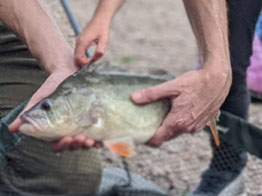
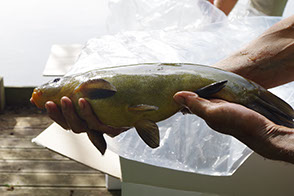
Hetty's Kingsbridge Perch
One of the Brood Tench stock into Medley's last year
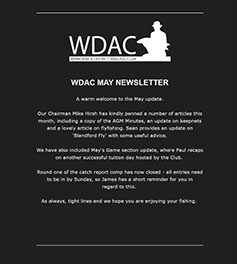
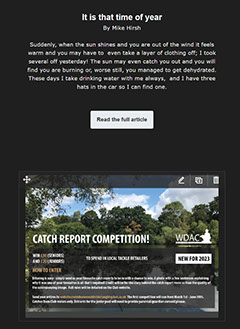

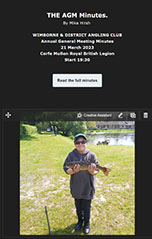
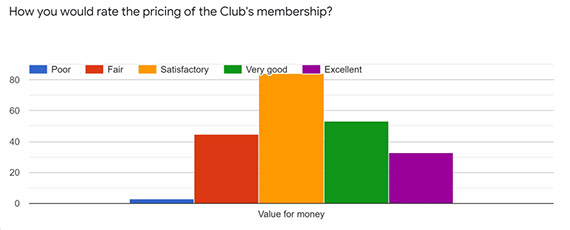
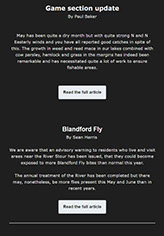
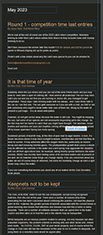
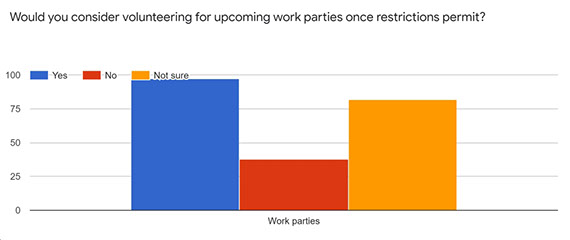
Stocking and the Club’s Coarse Fish Populations
The Club is committed to providing quality, varied angling opportunities across our portfolio of coarse waters. We have recently invested heavily in providing better access to some of our key venues. This has included works to improve parking arrangements, paths and swim construction. Members who have been with the Club for five or more years will know the real efforts made to improve this infrastructure recently.
However, as nice as it is to sit in beautiful waterside surroundings, from time to time we all want the float dip, the tip wrap round or the alarm sound. This article helps explain current stocking policy into some of the Club’s waters and in so doing also responds to some of the queries raised by Members filling out our survey.
The Club is now a corporate member of the Institute or Fishery Management and has also has on-going discussions with the EA local officers about our waters. The consistent best advice about fish stocks is to look after the existing fish stock and manage them appropriately. Importing fish risks importing disease and new fish may not adjust to their surroundings and be expensive failures.
Managing our fisheries may, for example, mean moving on small fish if lakes get over-crowded and the Club also needs to be clear about what fish should be in a particular water. For example, when the Club dredged and re-stocked Medley’s at Edmondsham three years ago, the decision was made to make it a water holding only tench and crucians. What has been both interesting and exciting is to see the numbers of fish that have bred from the original stocking. Last summer the Club had a further delivery of broodstock sized tench to enhance that stocking, but ultimately we are now confident that it will provide a surplus to be used elsewhere.
Part of the problem we do have is predation. As you will probably know, to stop cormorants eating those tench and crucians the Club now ‘strings’ Medley’s in the winter spending two or three days of a working party weaving a web of baler-twine. This lake has also been surrounded by an electric sanctuary fence to deter the otters. Otter use the adjacent River Crane so preventing them from detouring in for lunch is important. Julia’s the southern lake at Edmonsham has the same problem.
Indeed, the same matter of predation applies to the three smaller lakes nearest the Sherford River at Kingsbridge, both Wellington and Widgeon particularly suffer from occasional attacks by cormorants and otters. As Mike Hirsh has advised in his article, the Club really cannot do anything about the otters, but the Club does hold a licence from Natural England to control cormorants and that work has carried on over the last few years too. In this respect you will know there is a reporting system in place on the web-site to register sightings. The Club’s Committee does need the memberships’ eyes on this reporting so Stu Hitchman can re-apply for the licence.
To boost the fish in the smaller lakes at Kingsbridge the Club has recently put 84lb of bream of between 1 and 5lb into Widgeon and 76lb of bream of 8 to 12oz, into Tranquil. With the better access provided by the refurbished paths the strategy is that more fisherman will fish the smaller lakes and in turn that will reduce the likelihood of the cormorants attacking the fish population.
The Club has a stock pond at Kingsbridge and now plans to build one this coming year at Edmondsham. Purchasing or transferring small fish to a stock pond and growing them on in conditions that are capable of being closely monitored makes good sense in terms of value for money and enables the Club to plan more accurately for future fish to be stocked to boost numbers into the Club’s lakes. The larger the coarse fish, unsurprisingly, the more expensive it is to buy in. As all the Club’s human effort is unpaid, the labour costs of commercial fisheries incurred by looking after and feeding growing fish are not something the Club incurs. Soon there will be tench of a suitable size to stock into Kingsbridge’s complex.
However, the Committee appreciates that there are some members who want to catch big fish and there is nothing more majestic than a big carp. Later this year or early 2022 we will take delivery of six 20lb+ specimen Carp from VS fisheries. The Club has already paid a deposit to secure the delivery. These fish will be stocked into the large lake at Creekmoor. They have been carefully bred and selected in conjunction with Simon Scott, of that Company, for their incredible growth rates. It is our hope that Creekmoor will give them the space to continue to pile on the pounds! The fish will be paid for out of the increase in the night permit fees.
Plans are in place to commence a restocking of Julia's lake at Edmondsham too later this year. A pre-requisite of this stocking will be to complete the electric fencing that comes south from Medley’s and introduce new internal gates so the main car park will not be within the fenced area.
When it comes to the River Stour, natural recruitment for many species has recently been good as verified by spot electro-fishing carried out by the EA. Despite the attentions of otters and cormorants catches of fish, particularly roach this last winter have been heartening. However, barbel on our home stretch between the weir at Cowgrove and that at Canford, continue to be scarce. We have had informal discussions with the EA about adding more barbel, but because these fish are recruiting well in the lower reaches there is a reticence to licence such a stocking. As this article is being written there is a formal application awaiting determination to introduce a small number of barbel brood stock. The EA officers will need to come to a conclusion on, what is for them, a matter of balancing divergent interests. Either way the Club’s Committee members will want to keep channels of communication open and positive because the EA do have the River’s interests as one of their key priorities.
Keep an eye on our social media for updates of future stocking plans.
Iain Scott
Committee Member


Bream being stocked into Tranquil
Bream being stocked into Widgeon
The Stour Valley Park - A planning representation on behalf of Christchurch A C, Ringwood and District AA and Wimborne DAC
The Stour Valley Park - A planning representation on behalf of Christchurch A C, Ringwood and District AA and Wimborne DAC – by Mike Hirsh
Below is a representation submitted early in 2021 to Dorset Council and copied to Bournemouth, Christchurch and Poole Council about the concept if the Stour Valley Park.
WDAC Committee Officers were asked by LandStory, the appointed Councils’ consultants involved in the Park to provide an input in a specialist workshop with the other local Angling Clubs. In turn this has led to an agreed submission by all three Clubs in the context of the Dorset Draft Local Plan upon which there was a consultation earlier this year. (From memory the first time the local clubs have worked together in this way).
If you have not already done so please go on to the Stour Valley Park website https://www.stourvalleypark.uk to see the nature of the proposals and engage in the process of consultation. However, this process is running in parallel to the Dorset Council local plan consultation and as you will read this is one of the problems, as it is not understood how the Park will mesh in to the wider strategic aims of both Council and how works in the future will be funded.
The Submitted Representation:
Local Plan Representation Stour Valley Park – the need for a Policy and Supplementary Planning Document.
by Christchurch Angling Club, Ringwood and District Angling Association, and Wimborne and District Angling Club.
Introduction
Christchurch Angling Club (over 1400 members) Ringwood and District Angling Association (2400 members) and Wimborne and District Angling Club (approximately 900 members) are stakeholders in the Stour Valley as owners and users. These three local Angling Clubs [the Clubs] have come together to provide a united position in relation to the Stour Valley Park project. The Clubs together are key players in the local economy, in that they have a considerable ongoing financial investment in paying for anglers to access the River and they provide a consistent access framework that allows anglers to fish regularly not only in the main River, but also in the lakes and still waters associated with the Stour’s catchment. Angling provides a substantial economic injection to the local and tourist economy; the River being of National importance as an angling destination.
The Clubs also provide a strong element of social cohesion with the local community and are an avenue for facilitating better mental health and well-being by enabling a sport that is now recognised by many charities and organisations in that context. The Clubs work directly with the Councils too in this respect.
The Clubs have a long-established history of use of the River for angling and have contributed hugely in the past to being directly responsible and also being catalysts for its management in a number of respects. The Clubs are directly concerned to try to ensure that the environment of the River is improved, in accordance with the stated aims of the draft plans for the Stour Valley Park project. However, the Clubs are concerned that without a real place in the development plan process and the associated political commitment to future expenditure and proper engagement with the public, the Stour Valley and its environs will decline.
The Clubs are participants in the consultation process for the draft Stour Valley Park Project (SVPP) being prepared currently by LandStory; the appointed consultants. These Clubs recognise change is going to occur along the River and that, in this context, The Stour Valley Partnership is a worthwhile concept. Further that the idea of the Stour Valley Park (SVP), if properly executed, promises to be challenging, unique and beneficial to many of the communities and interests that utilise the corridor now. However, improving the River Stour and its environs, whilst at the same time increasing its recreation potential is a twin aspiration that poses obvious tensions.
The size of the area involved and the fact that it is located across both Dorset and BCP Councils, poses particular issues for the local authorities involved and of course the River itself is largely the statutory responsibility of the Environment Agency.
Representation arising from the Omission of a specific policy relating to the Stour Valley Park.
The Dorset Council Local Plan draft prepared for the purposes of consultation is unsound as it fails to include a policy, contrary in part, to the Council’s own stated policies elsewhere in the plan, for the Stour Valley Park.
In the section on the Environment at paragraph 3.2.6 of the Consultation Draft Local Plan there is a list of strategically important green space related projects, but the policy that follows at ENV1 fails to translate how any of the projects are going to be adequately meshed in to the development plan process. This list is disparate in terms of the nature and complexity of the projects, but what is abundantly clear is that there is no explanation about the status of any future SVPP nor the Development Plan mechanisms that will be placing pressures on it; the most obvious being the place where SANG and related activity is being identified. There are several fundamental problems for example:
• A number of SANGS linked together provides a completely different scale of attraction. Instead of local open spaces, by increments a regional park is being created with a significantly different level of attraction and different requirements in terms of services, car parking etc. [For example and from personal experience, as an officer at the time working for East Dorset DC, involved in the original project, Moors Valley was conceived as a local park with the planned growth of Verwood. It is now a strategic project and regional attraction with a large car park].
• The Council has declared a Climate and Ecological Emergency in 2019 and yet the associated increase in seasonality that will arise associated with wetter winters has yet to be properly understood, but is plainly at variance with SANG provision, which requires all year round access in accordance with the existing Heathlands SPD. [If the SANG provision fails because it is not providing suitable alternatives to the Heathland, particularly for dog walkers and their animals, then Protected Heaths will again be placed under pressure and future house building in SE Dorset will be put at risk. Dogs off leads are a well-documented source of pollution due to the way in which they generated fine particle soil pollution entering and leaving water courses].
• The simple volume and variety of users needs to be properly understood and where possible accommodated not just provided with lip-service in terms of on-going consultation. In this context, the almost exponential increase in walking the available public access areas this last winter (2020/21), activity it appears largely associated with the pandemic, has already done significant harm by widening and degrading footpaths and cycleways ill-designed for such numbers of users in wet conditions and has led to trampling of bankside vegetation and soil compaction to the detriment of trees and shrubs. In turn this may well lead to a reduction in bio-diversity due to the harm, for example, to River fly habitat (River flies are keystone species of the River’s bio-diversity), nesting sites for protected bird species and cover for the passage along the River of otters etc.
For the Stour Valley Project to be a success for the communities adjacent, it needs to be properly resourced in terms of a capital budget for major works, a revenue budget for on-going maintenance and a dedicated team of skilled individuals to act as the managers, communicators and fixers. To date, and as distinct for example from the Dorset Heathland SPD, the Consultative Draft Local Plan fails to elevate this project in a way that provides any satisfactory mechanism to ensure that issues are properly considered in terms of consultation, and that funds and human resource mechanisms for future management are properly part of a meaningful cross-Councils’ plan. Without this and despite the good work being done by LandStory there is a real danger it will remain an aspiration courting disaster and will be contrary to related policy in the Environmental Section of the Plan.
Indeed, there is a history of partial failure or lack of ambition in plan making related to the River Stour. The EA-led lower Stour Restoration Plan was produced in 2012 and re-assessed in 2019. There have been no funds to undertake large restoration projects and it is understood that the Plan is now being revisited by the EA to update perceptions on what is needed (and it is feared this means in practice scaling down ambition due to the absence of funding). Small-scale and very localised projects have been undertaken successfully by a variety of initiatives, but these have not sat within a publicly accountable strategic vision that is now required. The Stour Valley Park design should clearly accommodate appropriate restoration measures. Development of the Stour Valley Park should incorporate beneficial river restoration actions, guided by the specific EA/Hyder reports. [https://www.wessexwater.co.uk/environment/catchment-partnerships/stour-catchment-partnership]
The aspiration for the River Stour and its immediate habitat, according to the Partnership is going to be one of improvement, and Dorset Council as a partner is committed to that. The key strategies to improving the River Stour in terms of its bio-diversity must be:
• reducing pollution in all its forms and,
• investing in the mitigation or removal of obstructions.
However, there is no meaningful reference in the Consultative Draft Local Plan to gathering existing data for baseline information for assessing bio-diversity and assessing its decline or improvement and for the River Stour this is critical. There is a reference at 3.4.13 to the DERC and the information that this worthwhile organisation gathers, but that is a far cry from actively investing in a co-ordinated survey of data, which is a pre-requisite of such a project. Its publication in a comprehensive way that the public can understand is also a pre-requisite. To date the gathering of baseline data has been poor and inconsistent. [The Clubs in conjunction with the Wessex Chalk Stream & Rivers Trust can provide significant evidence about lack of suitable data, but this should be obvious to those engaged in data gathering]. The bio-diversity work produced for individual SANGS has not considered the wider implications on River corridor and River species of the SANGS being knitted together to provide a wider strategic green corridor. [For example, despite Atlantic salmon being endangered on the R. Stour no SANG work has identified salmon lies, where fish historically rest on the journey upstream. These lies are out of the main current and are thus close to or even under the River banks.
Disturbance of lies forcing fish to frequently move due to human and canine activity will be likely to lead to the fish not being in condition to spawn as they have no means to replace energy lost because they do not eat on their spawning journey in fresh water].
At ENV2 the Council identifies the need to protect species that are statutorily protected and this includes their associated habitats. The explanatory section on page 72 explains exactly what the procedures should be. For example, the species listed in Section 41 of the Natural Environment and Rural Communities Act 2006 are a material consideration as a pre-requisite of considering development. Yet in this instance there is no apparent plan to survey the key species affected by this project. The surveys, particularly of rare fish species are partial or non-existent (reflecting the cuts and forced priorities of the Environment Agency). The European eel is an obvious example. The use of the River corridor by bats, otters and the bird species on the list, including migratory insectivores, that are also present on the lands and on buildings immediately adjacent to the River, require assessment and are particularly under threat from increased disturbance.
Thus, because the River Stour is primary habitat for a number of highly protected species there is a clear mandate, as a pre-requisite of any action along its banks, which may lead to introducing greater use by the public, to commence a wide and thence perpetual gathering of data. In terms of transparency of data collection this should also be regularly published with easy access for all. This concept is a close fit to Policy ENV3 concerning net gains in bio-diversity. The Council cannot lawfully introduce plans that threaten high level protected species and their habitats, so it follows that in reality, bio-diversity measurement, is a pre-requisite and the proposed Dorset Council Local Plan is unsound without a policy for this plan or project.
A related important point is that the River Stour is fed by tributaries that are statutorily designated habitats, which are reliant on key migratory species in part for their diversity. The southern rivers of the Stour and the Avon have only recently been found to have their own gene unique Atlantic salmon which are under threat as a species as are the River’s sea trout. [The Clubs can expand upon this evidential point but the EA will have good information too].
There are big issues to be resolved. However there are also real gains not only in terms of final outcomes but also in terms of involvement. So, for example, using citizen science, schools could count river flies on an annual basis as an indicator of bio-diversity. Walkers can log where surface water is making public paths unpassable and anglers can help identify where surface water run-off from hard surfaces is creating a pollution issue.
However, there must also be a commitment by the public bodies to regular monitoring of water quality, including nitrates, phosphates and micro plastic at regular intervals along the River, not just self-regulation of treatment works by the private sector. The water Framework Directive is helpful in this respect. The Environment Agency need to be consistent in their timing and location of electro fishing (the recent monitoring of fry may be one way forward in this respect) to provide audits of fish stocks. Regular surveys of open space adjacent to the River are also needed to identify the origins and purpose of human users as well as its wildlife (also because this needs to feed back into the value of SANGS in relation to managing Protected Heathland).
There are naturally going to be frictions between a variety of established and less established users of the water and its banks. Part of the plan needs to identify on-going communication mechanisms so for example rowers and anglers can talk quickly and easily if problems arise.
Suggested Policy
The Stour Valley Project
The Stour Valley will be the subject of a Supplementary Planning Document (SPD) that is jointly prepared by Dorset and BCP Councils together and in consultation with the Environment Agency and Key Partners. The Plan will provide a work programme for improvement to the water quality of the River Stour and make a part of its environs a unique and bio-diverse regional park. It will seek to remove existing River obstructions or mitigate them where this is not possible. It will accept that it is, in major part, land where seasonality and the concerns arising from climate change will need to be accommodated and:
• Explain proposals for baseline monitoring of the pollution levels and bio-diversity of the River and its adjacent habitat. This monitoring will be fundamental and a pre-requisite in shaping any major works or initiatives. Mechanisms will be explained for publication of future comparable data on a regular basis to enable an ongoing review of the success or failure of elements of the plan and further arising courses of action in subsequent plan iterations.
• Be multi-dimensional in communication in the sense that it will also provide for ease of contact between stakeholders with the aim of resolving conflicts that may arise on an ongoing basis and through local forums and/or electronic communication as well as setting up consistent consultation processes for new schemes or projects.
• Identify the source of future funding in all respects; and specifically, gathering and publication of baseline data, maintenance of related footpaths and accessways, the repairs to existing drainage arrangements in the vicinity of the River to reduce pollution from highways and surface water run-off from fields etc. and improvements to the River and its banks and other projects to reduce pollution. Further, to manage the flooding of paths and cycleways and the mechanics for the closure of areas due to locally wet or flood conditions.
• Be consistent in approach across the Councils’ boundaries
The Clubs will of course be willing to agree a final wording.
A copy of the representation is also being sent to the Policy Team BCP Council
Prepared by:
Mike Hirsh BSc(Est Man), Dip TP, MRICS, MRTPI
acting for Wimborne and District Angling Club, Christchurch Angling Club, and Ringwood and District Angling Association.
A tribute to Club Member Brian Rose
I first met Brian on the banks of the River Stour, where he loved fishing for roach. Being a new member at the time and not knowing Dorset, I asked him if he would like to come along one day with me. Thus began a thirty-year friendship fishing on Sundays, as well as becoming a very good family friend. I mentioned to him that there were club matches and it was agreed that he could fish these. I told him “don’t be late, I will call for you at 7am”, He was always a rod and reel man not liking pole fishing, although I tried on a number of occasions to convert him with no success.
On still waters he would always fish with SPAM down the edge, members who got to know him, called him Plumrose, which stayed with him until he passed away.
Brian had one wish to catch a roach over 2lbs. On Packhorse Brian caught one of 2lbs 5ozs on meat (jammy b****r), which was a day for him to remember.
When I go for walks or fish at Baileys, I sense Brian is not too far away. I do miss not being able to fish with him, but know he is probably watching every cast and having a little mutter to himself!
I would like to say a big thank you to Jim and Neal for their kindness to Brian towards the end of his life - he appreciated being able to fish nearer to the car parks and not having to walk too far.
Mike Cullen
Major access improvements at Kingsbridge
As many of you will have noticed by now the Club has invested heavily on improved access and parking on its Kingsbridge Lakes complex at Organford.
The most recent round of access improvement commenced immediately after the Christmas break on Monday 4 January 2021 and continued until completion at the end of March.
The works identified by the Committee as essential were identified as the removal of some large, dangerous, trees in the car park; the resurfacing of the car park; and the resurfacing of the causeway. To ensure this work was completed in a timely and efficient manner the Committee contracted this part of the works to N J Lawrie.
Additional access improvement works were carried out by a small team of Club volunteers headed up by Mervyn Griffiths. These works involved the installation of perimeter and access pathways around Tranquil, Wellington and Widgeon Lakes; the construction of improved designated fishing swims on Tranquil, Wellington and Widgeon lakes; and finally, improved water drainage.
The before shot
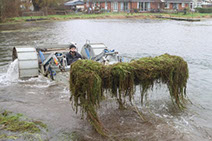
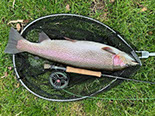
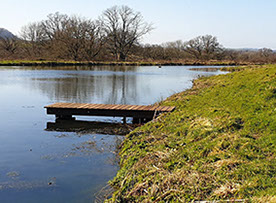
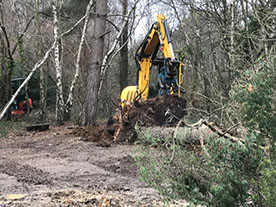
Clearing of dangerous Oak at entrance car park entrance
Gentle encouragement to dangerous Pine at head of new car park
Extent of pine’s roots
Resurfacing - an idea of scale as the stone is delivered
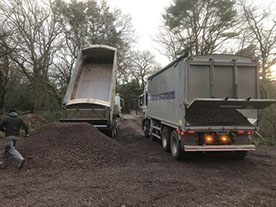
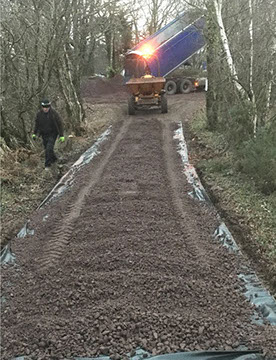
Resurfacing causeway
Grading a level surface
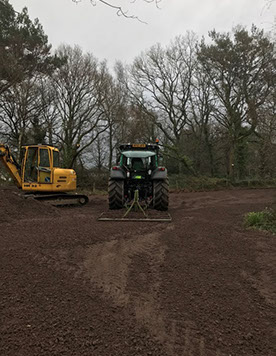
Extracting rotten platform on Tranquil
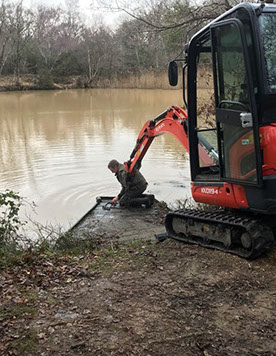
Swim landscaping on Tranquil
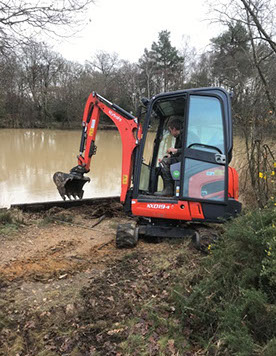
Railway Sleeper and Chestnut Post construction
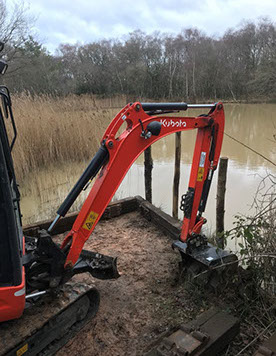
Clearing the perimeter around Widgeon on the line of the old path
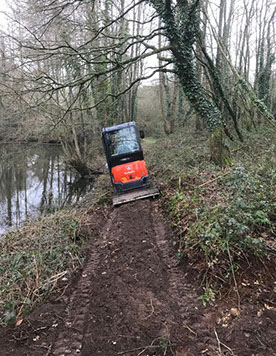
Swim construction Widgeon
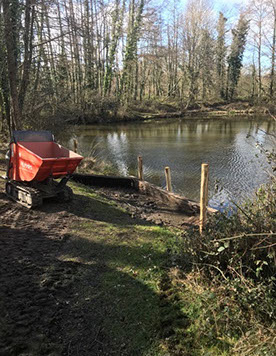
Wellington stone perimeter
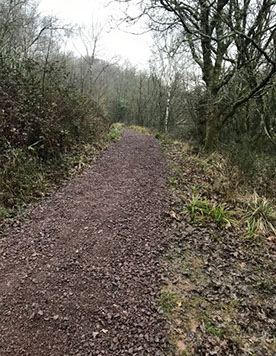
Compacting access pathway to Wellington
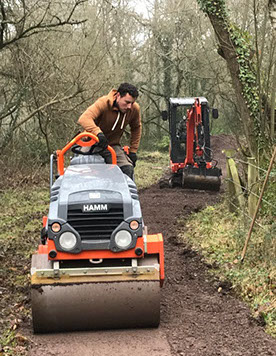
Compacting perimeter around Wellington
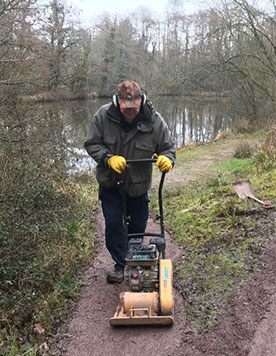
New outflow from Wellington
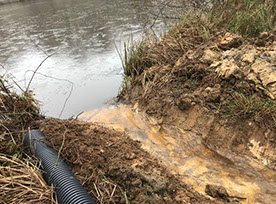
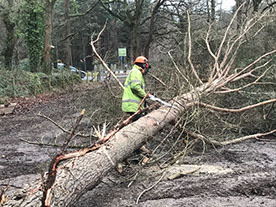
Recycling pine for vehicle barriers
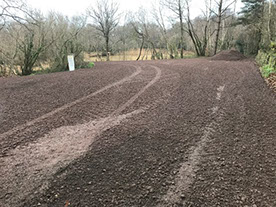
The after shot
Causeway taking shape
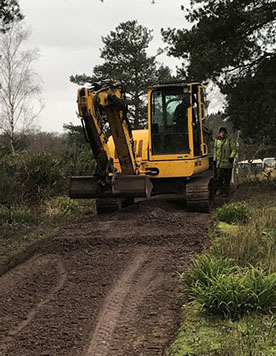
The Club’s Committee remains committed to expanding and maintaining its portfolio of waters for its members. The Committee has identified a number of additional projects that will be delivered in 2021 that support the recommendations made by its membership and identified in the 2021 survey. Keep an eye out in future newsletters for further detail.
Stuart Hitchman
Secretary
Happy Days at Baileys on the River Stour
At the 2018 AGM, I asked if the Club could have river matches again on Baileys. Some of the members had said that it was a waste of time. I arranged two matches on the river before the end of the year. Top weight at the first match was over 14lbs, landed by our President Brian, and there was an average weight of 4lbs plus.
The second match was unfortunately much harder due to the weather.
In 2019
6 January – the first match only 5 fished, average was 12lb 5ozs. Chris Burgess weighed in 34lbs 8ozs and Hugh Miles with 18lbs, both were drawn in the roach bay.
The River was much harder to fish with the cold weather we had.
Pleasure fishing was enjoyable with roach to over a pound with dace, perch and of course pike also coming to the net.
We had to wait until November to get back to river fishing for the roach. We had one more match, but the River was in flood. The River Champion was John Read.
In 2020
Back on the River on the first Sunday of the year, ten fished and the average weight was over 10lbs. Top weight was 28lbs 5ozs.
A week later the River was spot on and the weights were better.
On 26th January it rained all day, weights were down apart from Keith Rumbold with 35lbs 14ozs on roach, perch and dace.
In February Storm Dennis arrived so there was no fishing at Baileys.
14th March, the last day of river fishing, I had the pleasure of fishing with Hugh and Martin, we all had well into double figures.
End of March came with the National Lockdown and no-one was allowed to fish. Within a week of lockdown being lifted people anglers were allowed to go fishing, but only by themselves, keeping a distance from others fishing, but unfortunately fishing matches was not allowed.
Pleasure fishing provided reports of roach up to 2 ½lbs, perch over 3lbs plus, dace up to 10ozs, bream over 7lbs plus and the odd chub. All caught at Baileys.
Well done to Keith Rumbold who was our River Champion
Mike Cullen
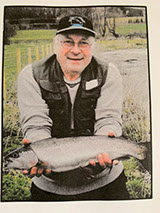
As was to be expected, members expressed their concerns over Little Canford, predation issues and stocking levels.
Articles last month and this month cover the remedial works in place to tackle these issues. The lease at Little Canford will not be renewed later this year. Crooked Willow was added tho the Club's portfolio. Hordle Lakes had been also, though the agreement was unexpectedly terminated just 5 days into our trial period.
Anti-predation measures are being closely examined for both Pinnock and Kingsbridge. Stocking will continue this year, with the aforementioned venues to continue to receive fresh stocks, as well tas the forthcoming purchase of large carp destined for the main lake at Creekmoor as things stand.
James Nash
Media Officer
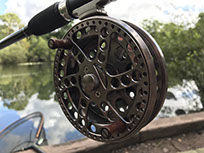
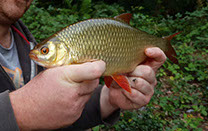
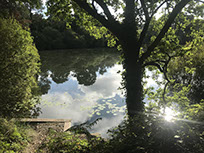
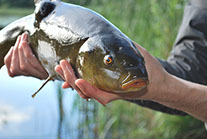
SITE MENU

HOME
VENUES
MEMBERSHIP
CURRENT NEWS
GAME SECTION
MATCH NEWS
FISHCARE SECTION
PHOTOGRAPHY COMP
STICKY BAITS COMP
COMORANT WATCH
GALLERY
CONTACT
JUNIORS PAGE
FIND US ON FACEBOOK

CONTACT WDAC

x
WDAC CHILD PROTECTION
POLICY STATEMENT
ANGLING TRUST - SAFEGUARDING CHILDREN AND YOUNG PEOPLE IN ANGLING

FIND US ON FACEBOOK
SUBSCRIBE TO OUR NEWSLETTER


CONTACT WDAC
COPYRIGHT WDAC 2019
TERMS AND CONDITIONS
DESIGNED BY J NASH
